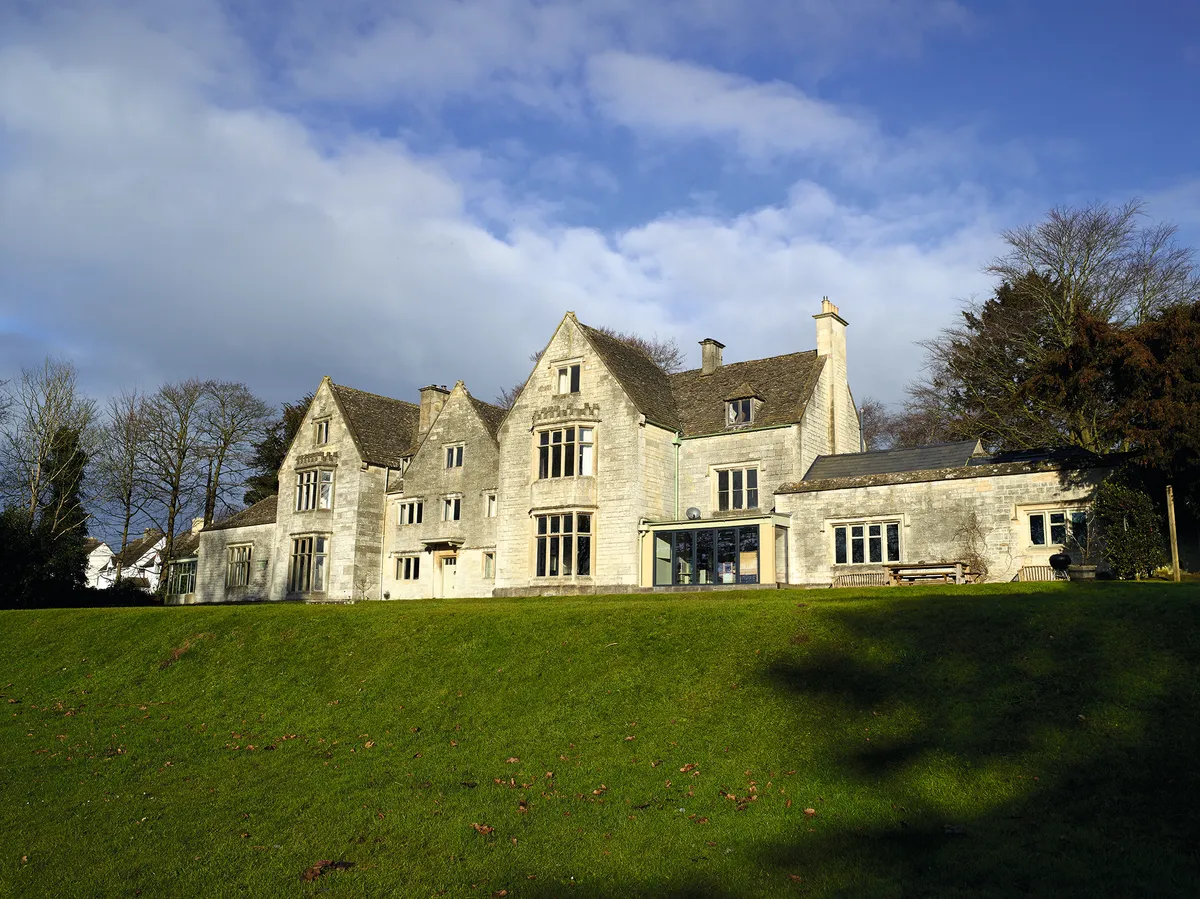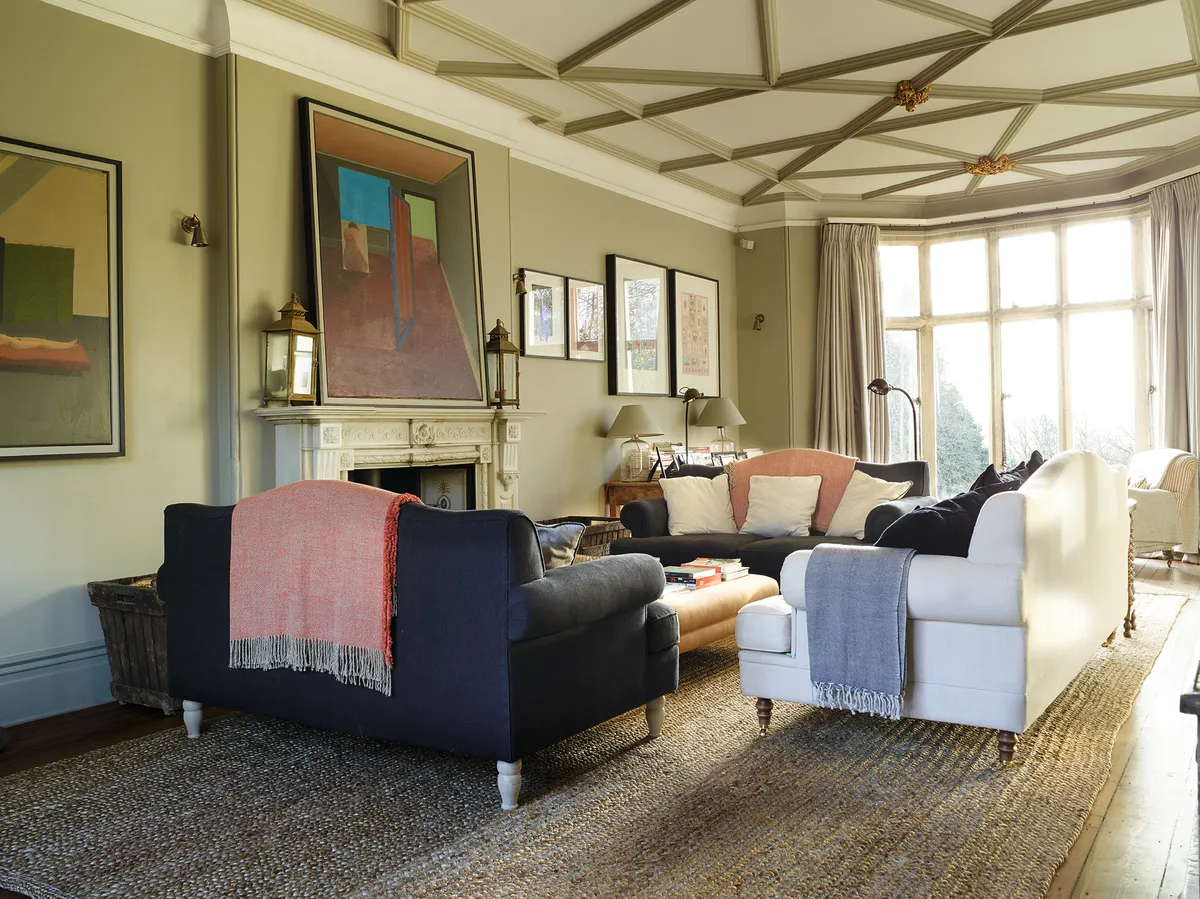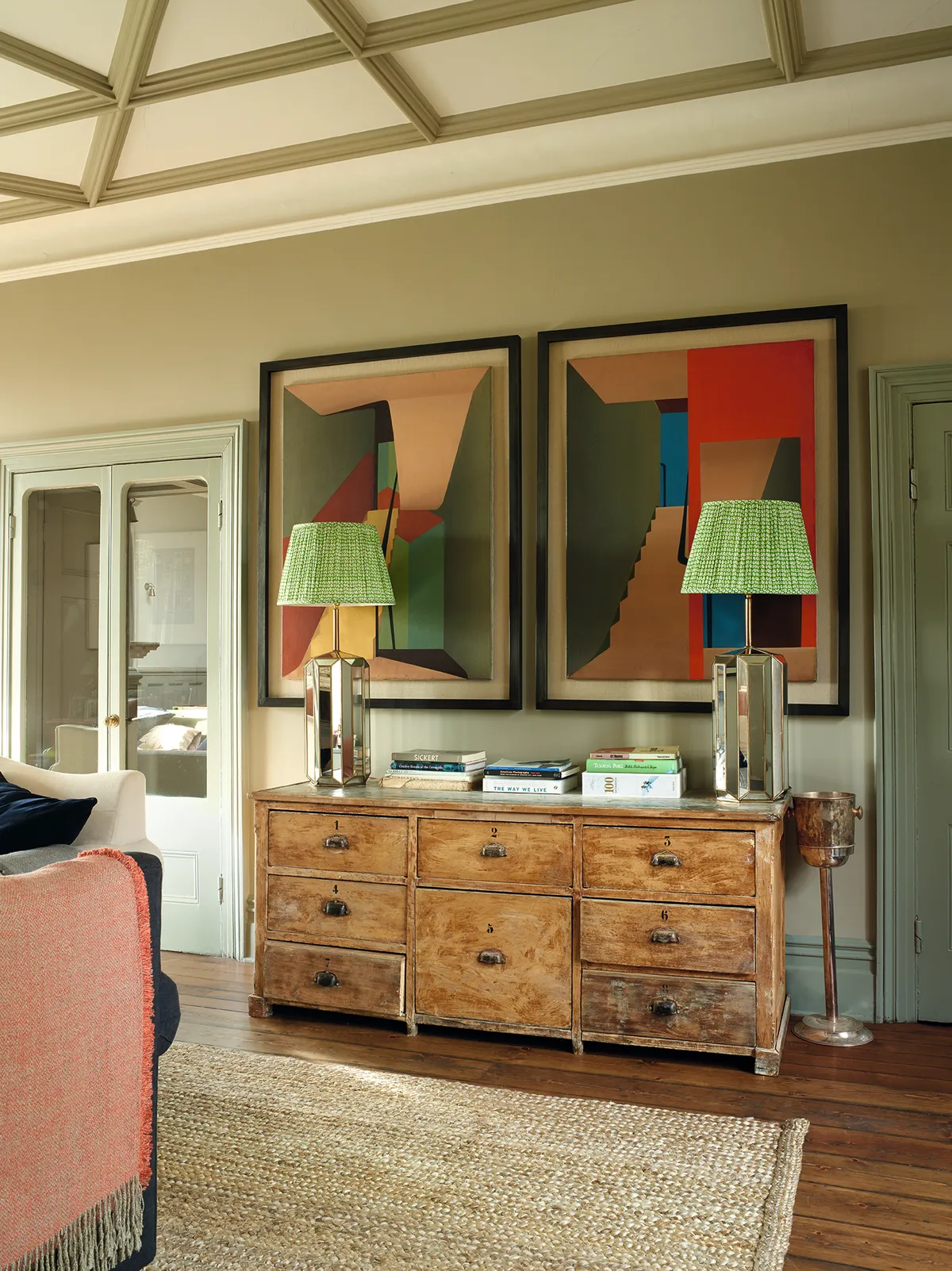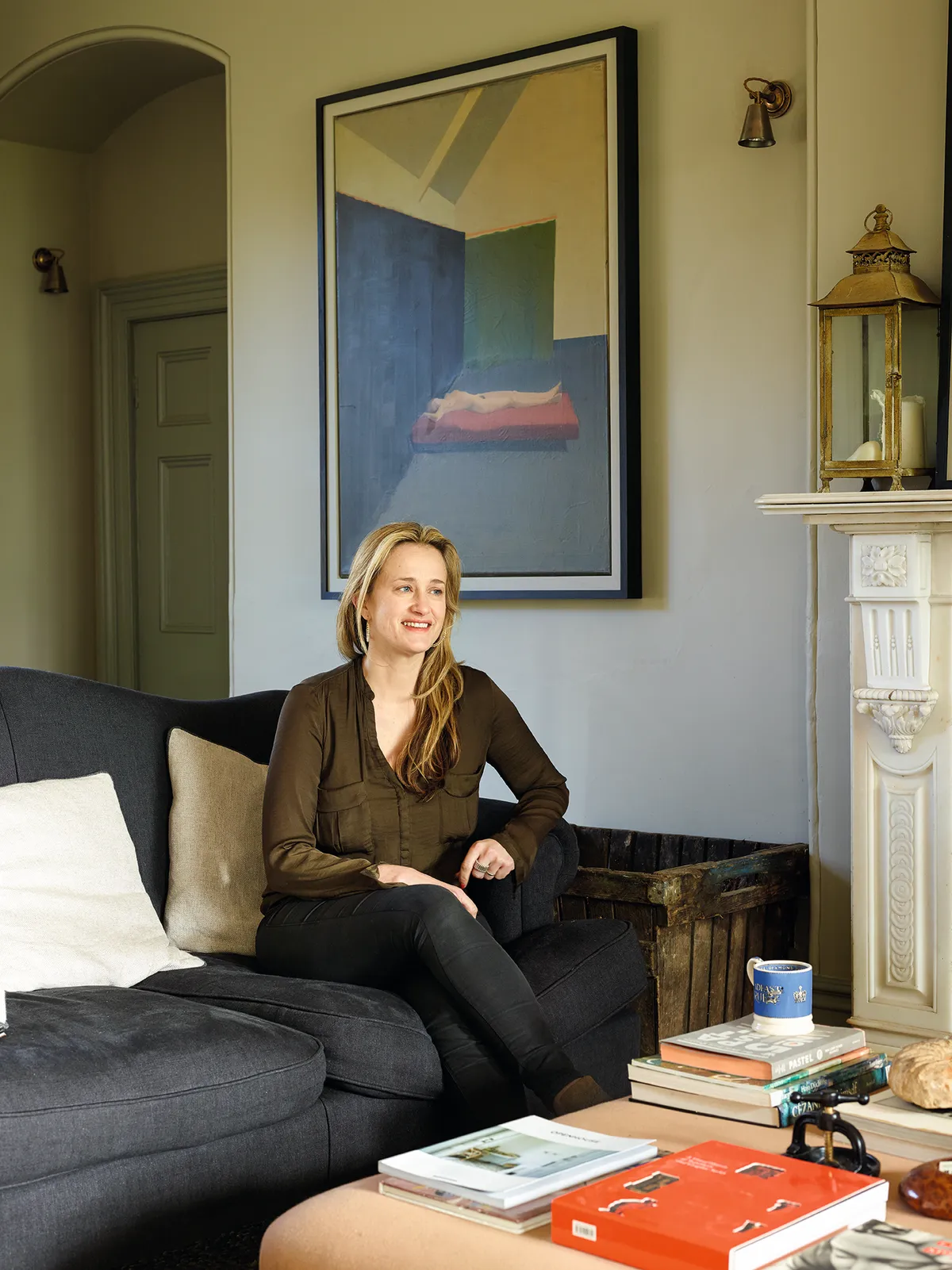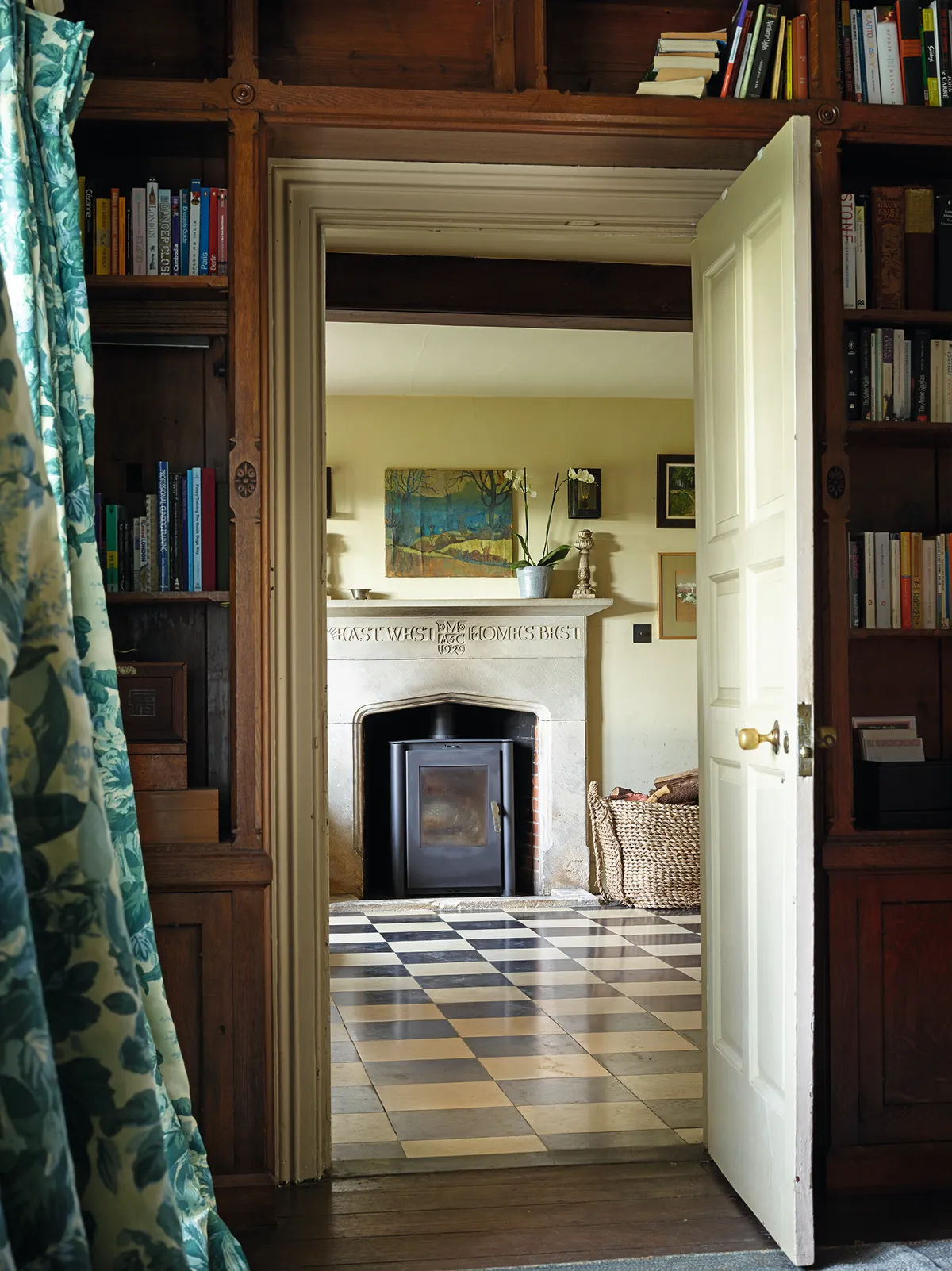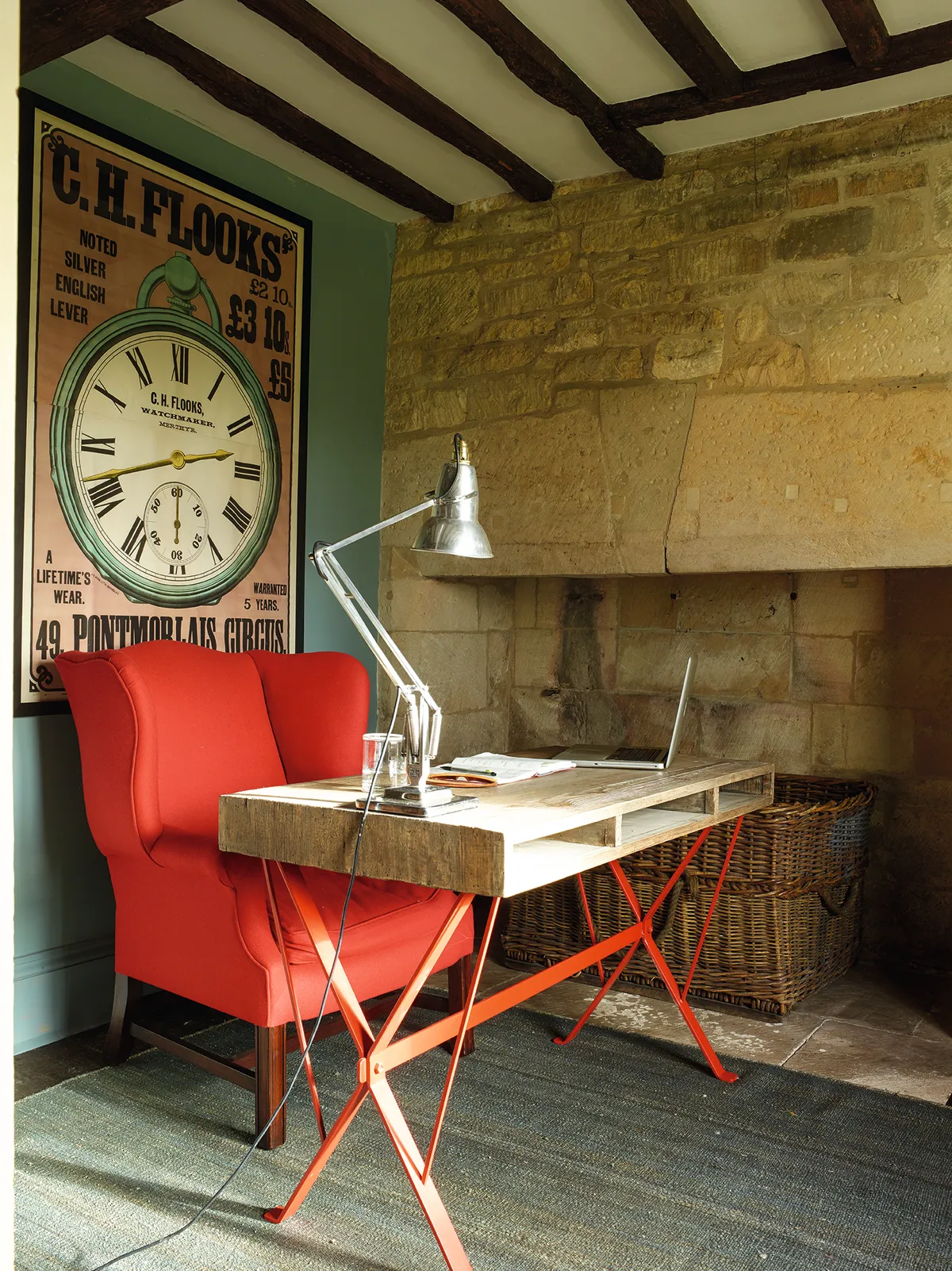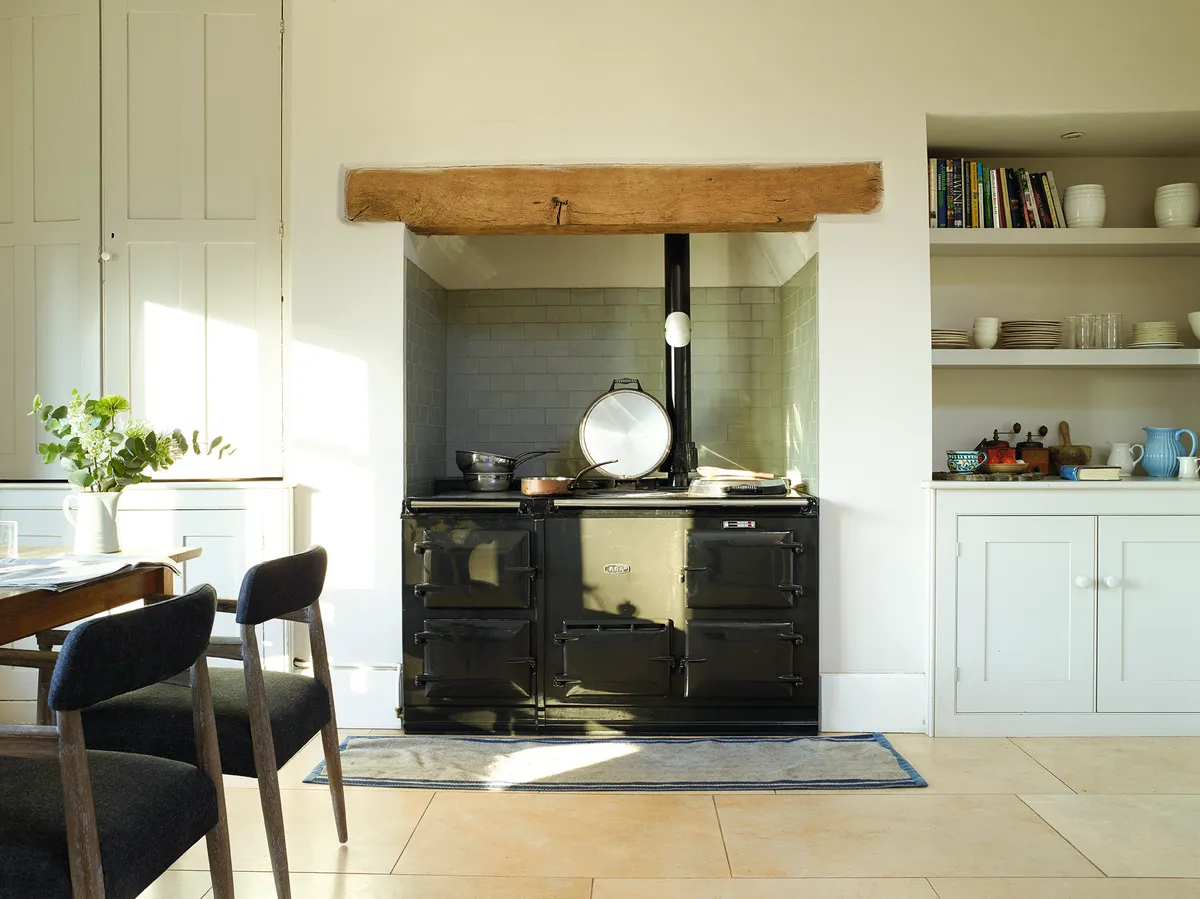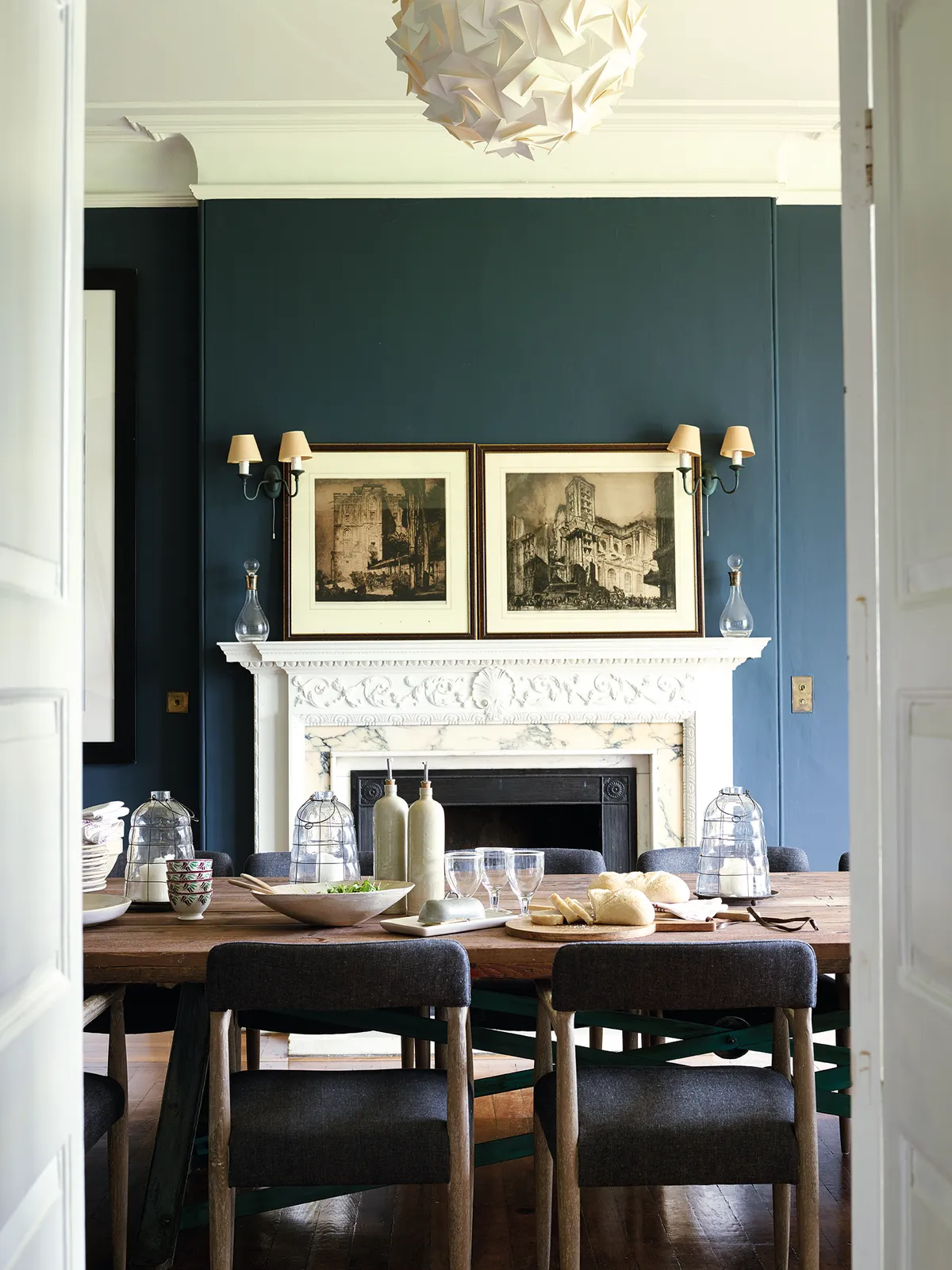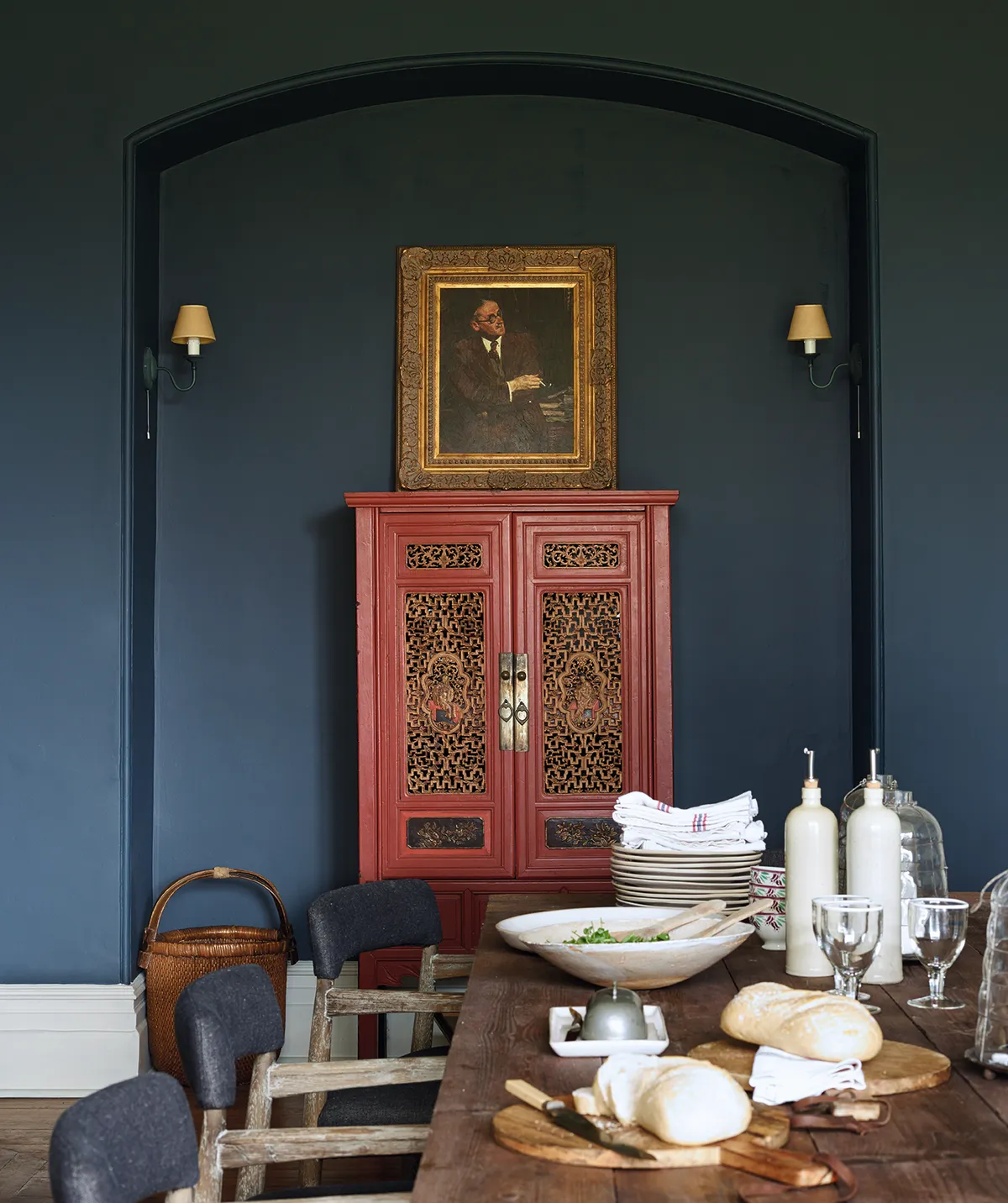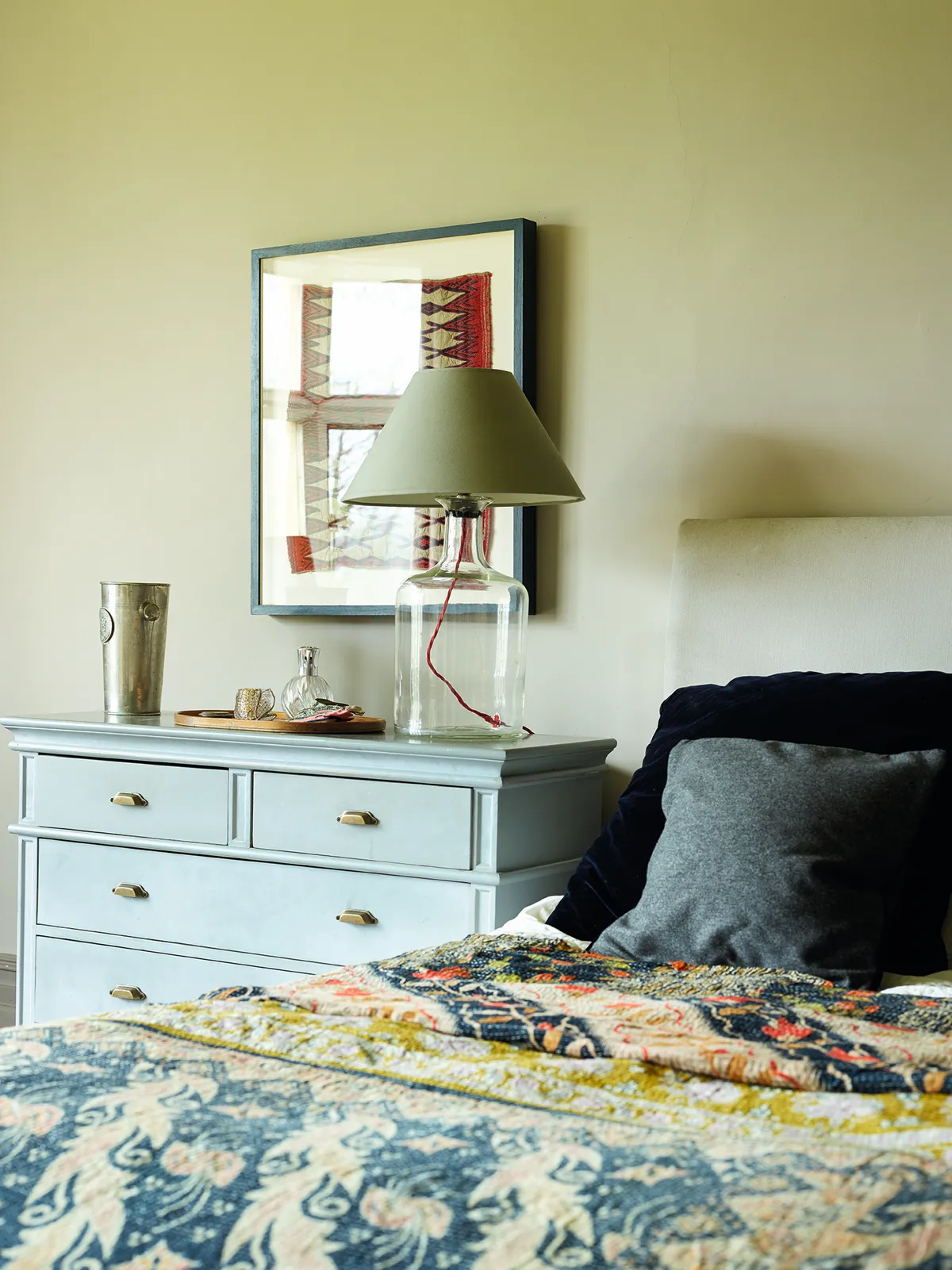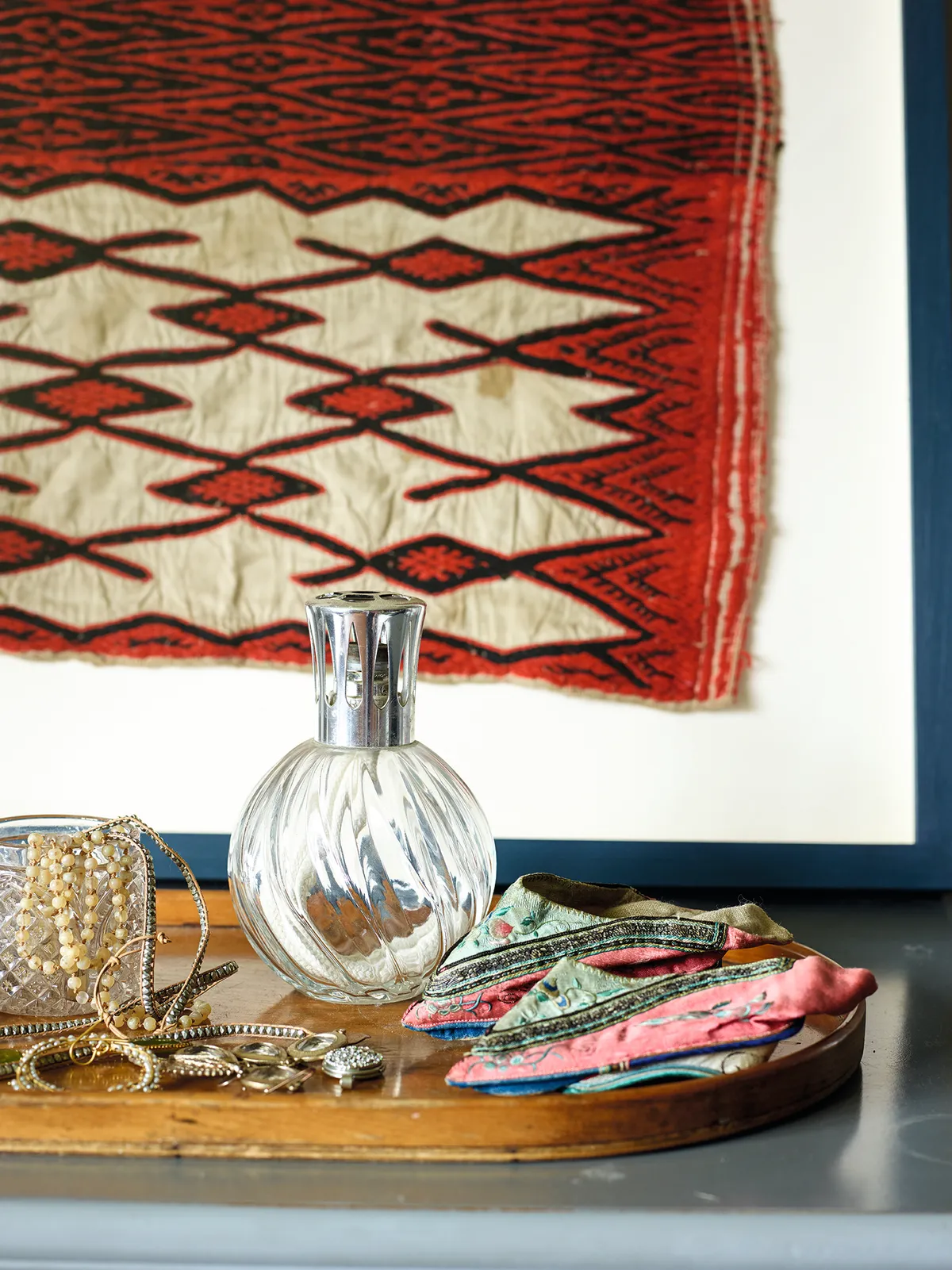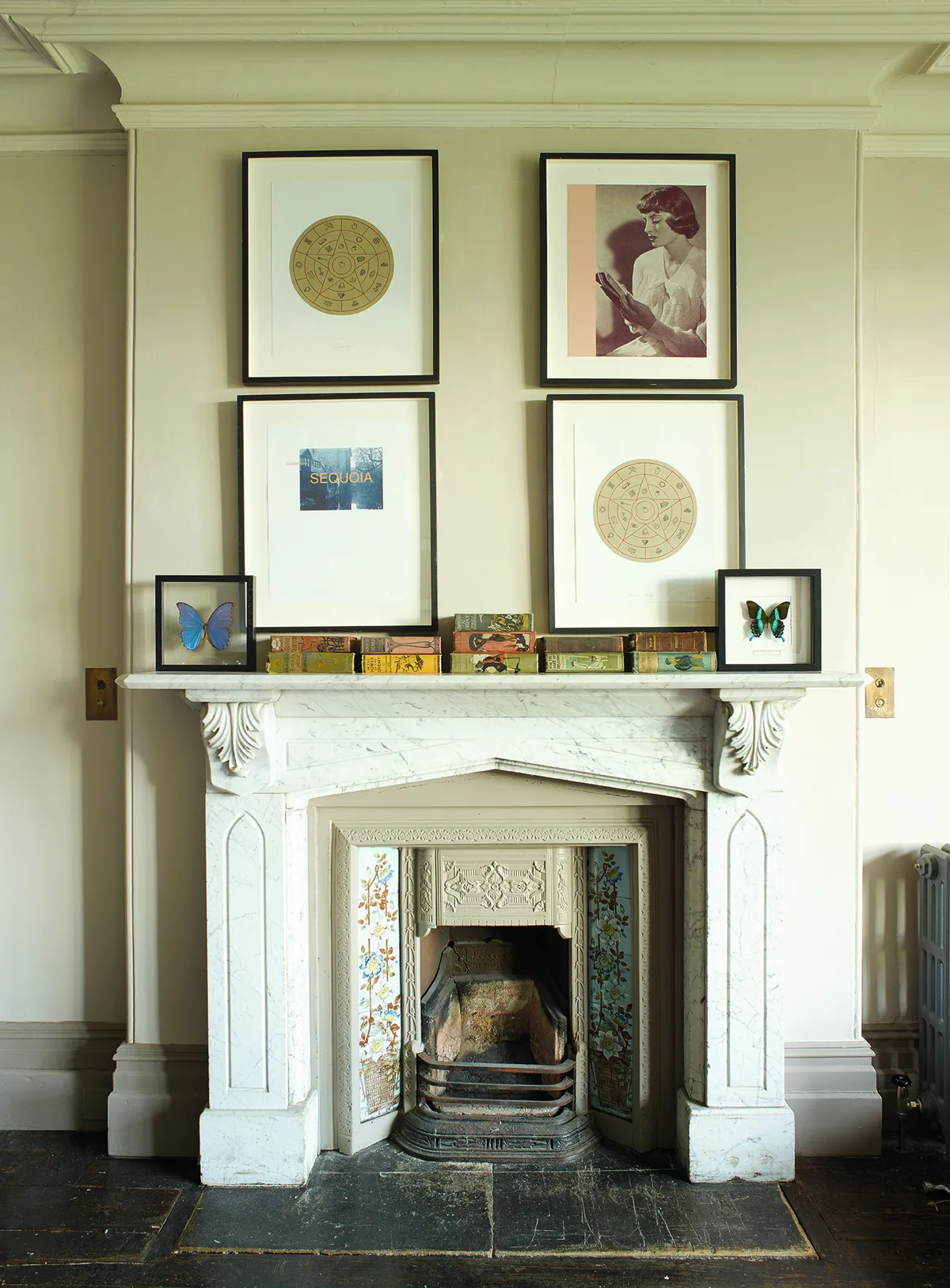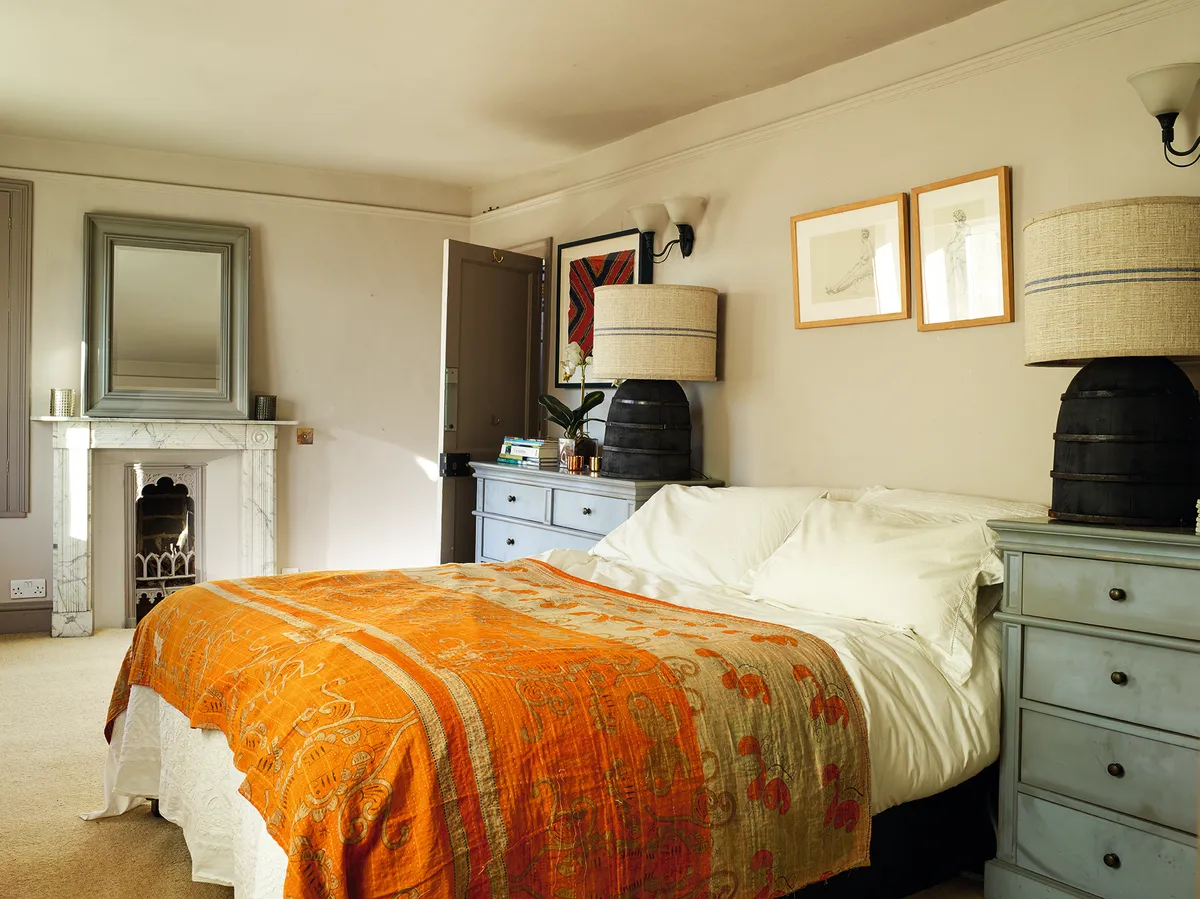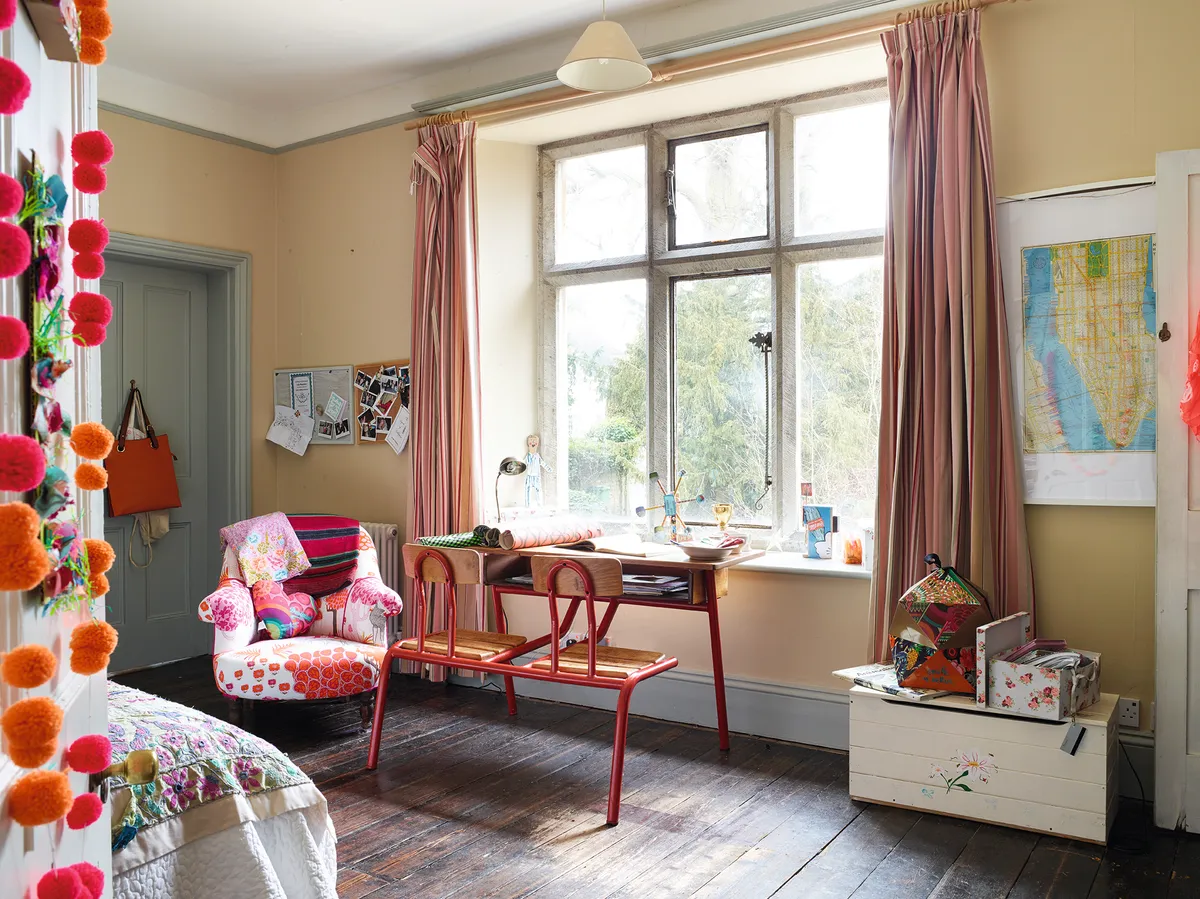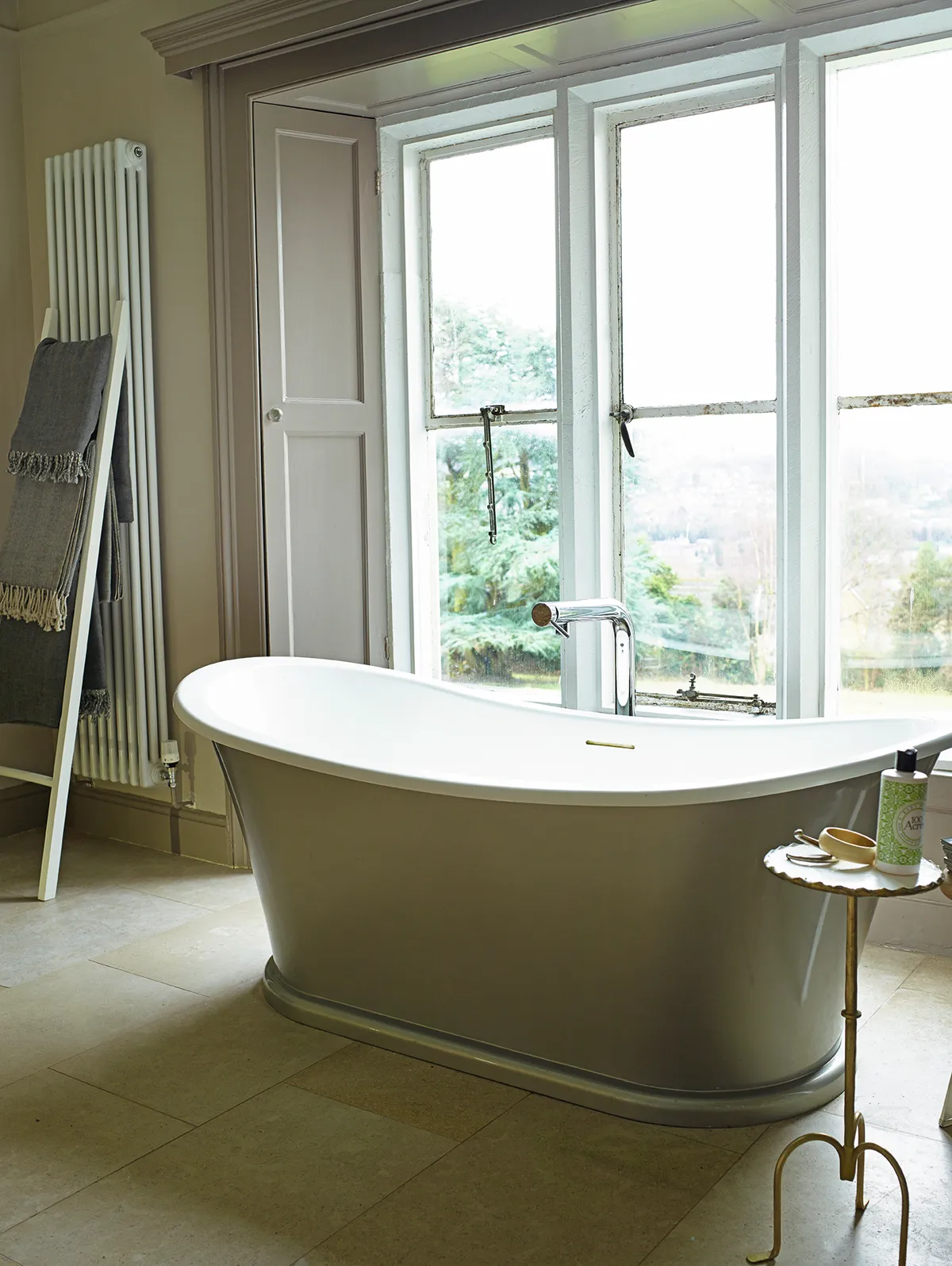Classic English antiques are teamed with striking 1960s abstract art and vibrant Asian embroidered textiles in Georgie and Sam Pearman’s Gloucestershire home, with the odd 20th-century industrial piece thrown in for good measure.
The property dovetails several architectural styles, so it’s apt that Georgie’s style is all about the mix: the hall boasts 1920s chequerboard tiles and carved oak newels, while the living room is pure 19th-century decorative rosettes and cornicing. Then, in the study, you travel back to the house’s 17th-century core, with a huge inglenook fireplace, deep window seat and dark beams.
That sense of history, of a home with stories to tell, was one of the draws. Georgie and Sam first visited the house when friends lived there. ‘I was struck by its character and the amazing view,’ remembers Georgie. When said friends eventually moved to America, Georgie and Sam first rented the house and then ended up buying it. Once the couple had moved in at the end of 2012, more information came to light about the house’s intriguing history.
The property sits in a hidden dip, midway up a very steep hill and, so the story goes (which is most likely apocryphal), it was where the Duke of York set up camp during the English Civil War in the 17th century. ‘From here, he’s said to have marched those 10,000 men up the hill – and then down again,’ says Georgie. ‘I’m not sure historians would agree but it does make a good story.’
More reliable sources reveal that in the late 19th century the house was the home of one George Holloway, a reforming MP and industrialist, and that from the 1950s it was a boarding school – hence some of bedroom doors still bear quaint dormitory nameplates from that period.
Today, Georgie’s study walls are lined with wallpaper swatches, Moorish tiles and squares of sisal and seagrass, samples for the boutique hotels she runs with Sam. ‘Our home sometimes gets the offcuts,’ jokes Georgie. ‘Or we look after the art that’s too bland or too full on’.
Georgie’s interior style on home turf is just as engaging as its more public face. The rooms in their boutique hotels are a mix of Vivienne Westwood squiggle motifs, antique furniture and contemporary art. At home, Georgie has adapted boutique chic to family life and then added a generous dose of the personal by adding vintage prints, fabrics and antique heirlooms.
As she points out, ‘Designing a room for a luxury weekend break is quite different to what works in a family home. Unlike a hotel, a family home has to fit together and to work as a whole. Even with the huge scale of this house, there’s still a flow and ease to these rooms and I want the decor to bring that out.’
Sam, whose career path has progressed from being a professional rugby player to a chef to running front of house operations, oversees the foodie side of their business, while Georgie’s remit includes the decorating schemes and the art. Her sister, who used to be a contemporary art expert at Christie’s, gave Georgie some steers on buying paintings, and her own love of antique furniture and fabrics came to the fore too.
‘I had picked up lots of early 20th-century hand-woven and embroidered textiles in Asia when I was travelling,’ she says. ‘These pieces feel all the more precious because they were made using skills and motifs that were passed down through families, but which are now in danger of dying out.’ Georgie reused a heavy Indian palace rug as curtains in their Cheltenham hotel, No 131, while at home a lovely Rajasthani wedding bag has been framed and now hangs in their own guest bedroom.
‘Adding antiques definitely makes a space feel more special, much more like a one-off,’ says Georgie. ‘I have always loved having antiques around the house and my sister’s expertise in the art world means we’ve been able to spot amazing contemporary paintings too. Antique pieces are a key element in our hotels and restaurants, and it’s one that I’m more than happy to echo at home’.
